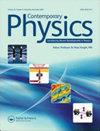刚体旋转与平面通道中的流体变形力学
IF 3.3
4区 物理与天体物理
Q2 PHYSICS, MULTIDISCIPLINARY
引用次数: 0
摘要
这本书是广泛的,在粘流体力学领域,在一般情况下,并在旋转粘流和平面通道流动的领域,特别是。起初,它的主题似乎是经典流体动力学,因为平面通道流动是流体动力学中一个重大的历史问题,但仔细研究就会发现,这本现代的书显然是原创的。它结合了泛函分析、几何分析、矢量分析,最重要的是提出了一种研究旋转粘性流动的新方法。这本书建立了第5部分(平面通道流动稳定性),其中一个新的观点对垂直流动,作为无限维的旋转,是提出的。第5部分的三章是洞察力和基本分析的完美结合,引导了严格的功能分析。另一方面,功能分析以一种非常容易理解的方式呈现。引入并解释了非交换惯性、涡旋幻影、涡旋突变、邻谱问题以及一系列严格的稳定性概念。这本书以一个重要的引理结束,用了两页多的篇幅来陈述!然而,这是一个非常容易理解的引理(在Rayleigh函数上),并且只需要两页就可以完成证明。本书的其余部分是通过第1-4部分对第5部分的补充。第1部分(速度应变)是从作者以后需要的角度回顾流体运动的基础知识,具有明显的几何风味。第二部分(刚体旋转)回顾了经典力学中的角运动,特别是以耗散旋转陀螺为例的角摩擦,对这一经典问题提出了新的见解。第三部分(守恒定律)讨论动量守恒,粘度和导热的作用,这部分的重点是讨论“离心机”,它被用来解释旋转粘性流动的一些异常。讨论了扭转旋转,包括作者的一些深入分析,解释了在实验中看到的一些奇怪的行为。这一分析得到了直接数值模拟的支持。第4部分(湍流)开始进入流体流动更具挑战性的方面。主题是“湍流力”的概念。力是速度脉动相关矩阵的法向积分。它原则上是可测量的实验和可提取的数值模拟。利用紊流力及其一般化的一系列结果得到了证明,甚至将其与天体物理学中的暗物质联系起来。这本书是对流体力学文献的一个受欢迎的补充,我毫不犹豫地推荐它。这本书不是教科书,因为它在大多数地方都太先进了。这是一本关于洞察力和方法论的书,它将通道流动和旋转粘性流动的研究带到了一个新的方向。它最有效的受众是博士后学者和学术研究人员,因为它提出了如何研究旋转粘性流的另一种观点,从而拓宽了研究视角。这本书长度适中,不到300页,但精装本售价85英镑,价格有点贵,尽管许多大学图书馆将为研究人员提供电子版。本文章由计算机程序翻译,如有差异,请以英文原文为准。
Mechanics of fluid deformations in rigid body rotations and plane channel F
This book is wide ranging, in the area of viscous fluid mechanics in general, and in the areas of rotating viscous flow and plane channel flow in particular. At first, it appears that the theme is classical fluid dynamics, as plane channel flow is one of the great historical problems in fluid dynamics, but a closer examination shows a modern book that is distinctly original. It combines functional analysis, geometry, vector analysis, and most importantly presents a new approach to rotational viscous flows. The book builds up to Part 5 (Plane Channel Flow Stability), where a new viewpoint on vortical flows, as infinitedimensional rotations, is presented. The three chapters in Part 5 are a beautiful blend of insight and elementary analysis, leading into rigorous functional analysis. On the other hand, the functional analysis is presented in a way that is very accessible. Concepts such as non-commutative inertia, vortex phantoms, vortex catastrophe, adjoined spectral problem, and a range of rigorous concepts of stability are introduced and explained. The book ends with a major lemma which takes over two pages to state! However, it is a very accessible lemma (on the Rayleigh function), and takes only two more pages to complete the proof. The remainder of the book is a buildup to Part 5 via Parts 1–4. Part 1 (Velocity Strain) is a review of the basics of fluid motion from a perspective that the author will need later, with a distinctly geometric flavour. Part 2 (Rigid Body Rotations) reviews angular motion in classical mechanics and in particular angular friction with the dissipative spinning top as an example, giving new insight into this classical problem. Part 3 (Conservation Laws) discusses momentum conservation, role of viscosity and heat conductivity, with the highlight of this part a discussion of ‘centrifuge’, which is used to explain some of the anomalies of rotating viscous flows. Torsional rotations are discussed, including some deep analysis of the author, explaining some of the strange behaviour witnessed in experiments. This analysis is supported by direct numerical simulations. Part 4 (Turbulence) starts to get into more challenging aspects of fluid flow. The main theme is the concept of a ‘turbulence force’. The force is normal integration of the correlation matrix of the velocity pulsation. It is in principle measurable experimentally and can be extracted from numerical simulations. A range of results using the turbulence force and its generalisations are proved, going so far afield as to relate it to dark matter in astrophysics. This book is a welcome addition to the literature in fluid mechanics, and I have no hesitation in recommending it. The book is not a textbook as it is too advanced in most places. It is a book about insight along with a body of methodology, which takes the study of channel flow and rotating viscous flows in a new direction. Its most effective audience is postdoctoral scholars and academic researchers, as it presents an alternative view of how to study rotating viscous flows, thereby widening the research perspective. The book is of reasonable length, coming in at less than 300 pages, but it is a bit pricey at £85 for the hardback, although many university libraries willmake it available electronically for researchers.
求助全文
通过发布文献求助,成功后即可免费获取论文全文。
去求助
来源期刊

Contemporary Physics
物理-物理:综合
CiteScore
2.90
自引率
5.00%
发文量
18
审稿时长
>12 weeks
期刊介绍:
Contemporary Physics presents authoritative and lucid introductory review articles on important recent developments in physics. The articles are specially commissioned from experts in their field. The authors aim to review comprehensively the current state of their subject and place it within a broader context of contemporary research, industrial possibilities and applications in an accessible way.
The Journal is of particular use to undergraduates, teachers and lecturers and those starting postgraduate studies who wish to be introduced to a new area. Readers should be able to understand the review without reference to other material, although authors provide a full set of references so that those who wish to explore further can do so. The reviews can also be profitably read by all those who wish to keep abreast of the fields outside their own, or who need an accessible introduction to a new area.
Articles are written for a wide range of readers, whether they be physicists, physical scientists or engineers employed in higher education, teaching, industry or government.
Contemporary Physics also contains a major section devoted to standard book reviews and essay reviews which review books in the context of the general aspects of a field.
 求助内容:
求助内容: 应助结果提醒方式:
应助结果提醒方式:


